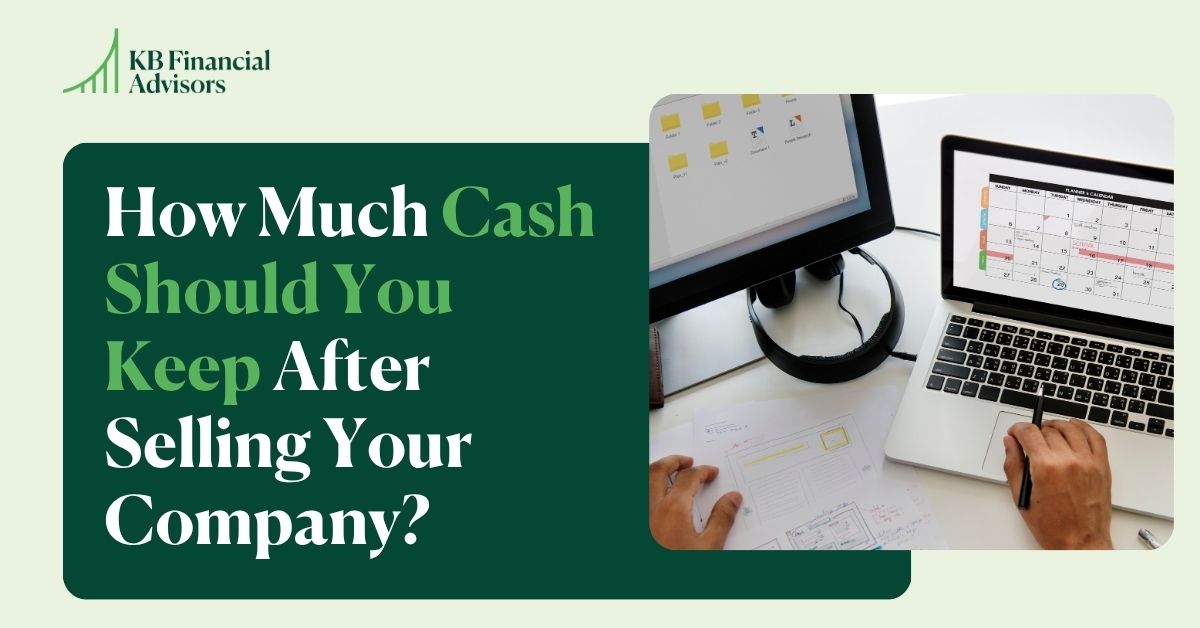For most tech employees, finding out an IPO is on the horizon is like a sailor seeing land for the first time in months:
They know their hard work & risk-taking has paid off, and they’re about to be rewarded with the excitement and freedom that comes with this new financial territory.
And it really is pretty fantastic:
When your company goes through an IPO, all those stock options and restricted stock units you spent years vesting finally give you the opportunity to either:
1) Own a decent portion of the publicly-traded company you work for
2) Sell (or exercise & sell) the shares you’ve acquired to put a lot more cash in your bank to get closer to your lifetime financial goals
3) Some combination of both.
Unfortunately though, “sell it all ASAP” usually isn’t the best financial strategy… you’ve got to consider taxes, market rates, and career plans to decide what’s best for you.
Not to mention, making the wrong moves with IPO planning could cost you hundreds of thousands of dollars in your net worth. ???? ????

In this guide, I’m going to walk you through the steps of planning what to do with your company’s IPO:
- Before it happens
- During your first trading window
- And adjusting your financial plans over the long-term.
Phase 1: When You Learn the IPO is Coming
As soon as your company announces that an IPO is coming, you’ll want to collect all your options, benefits and paperwork together.
You’ll need to have all your options and IPO-based opportunities to make money in front of you, so you can see the full picture of what’s going on.
1. Get Everything in One Place
Your first step in smart IPO planning is to gather all your documents into one place regarding your vesting schedule, the amount of options you’ve vested thus far (or will vest by the IPO date), and everything you have that’s yet to vest in the future.
You’ll also want to gather any shares you currently own, especially if they’re founder’s shares or Qualified Small Business Stock (QSBS).
2. Decide Your Goals
From there, decide what your goals are before you dive deep into the monetary possibilities. This way, you make sure your plans are in your best financial interest, and aren’t just about turning over cash as quickly as possible.
3. Figure out Your Projected Tax Bill
Then, looking at everything that will vest on the IPO date: find out how many shares of the company you’ll have on the IPO date, and what your company expects the share price to be on that date. (For example, if you’ve got double-trigger RSU that will vest into your possession on the IPO date… how many shares will you receive? And how much will they be worth?)
With that amount, figure out the minimum amount you’d need to set aside for taxes to cover that bill, and figure out if & how many shares you’ll have to sell to cover that bill.
4. Consider Exercising More Options
If you’re going into your IPO without any options exercised and without much RSU vested, you may want to go ahead and exercise some of your ISO (incentive stock options) to start the one year holding period for long-term capital gains.
Whether or not you do this will depend on your unique financial situation and your goals, so make sure you talk with your advisor to make a plan you feel good about.
For more info on this topic, read:
- Your Company Just Announced an IPO: Do These 5 Things Now
- Startup Founder Equity & Planning for Multiple Acquisitions + IPOs: A Case Study
- Going Into an IPO With No Stock Options Exercised
Phase 2: The IPO Happens
Because of restrictions like employee trading windows, the actual day of the IPO can be fairly uneventful in your financial life.
Sure, some of your options may vest into shares that add to your net worth… and your other options now have a set, tangible market value… but there’s not much you can actually do about it.
There are, however, a couple of must-do items between now and the day when your first trading window opens:
1. Figure Out Your Taxes
The first thing I like to have my clients do after the IPO happens is to note down the market price of their company’s shares, and use that to figure out the additional tax they’ll owe, even if they don’t sell anything in their first trading window.
Most tech employees will see a significantly larger tax bill in the year that an IPO happens, because their double-trigger RSU will vest into their possession as shares. (And if they’ve been working for the company for a while, that’s a lot of shares.)
From that, figure out what your additional income will be on top of your salary, what tax bracket that will put you in, and how much more tax you’ll owe after your company’s withholdings.
With that math, make an appointment with your financial advisor to figure out the best way to cover that bill, and when to make an estimated payment to cover it.
2. Choose a Target Selling Price
Because you won’t be able to sell your shares right away, you’ll need to use the time right after the IPO happens to decide what price you’d be happy to sell your shares at. The idea is that when the stock reaches this price, you’ll liquidate and cash out some of your shares.
It’s important to choose a target price because a lot of employees get emotionally attached to “when it’s higher.” Without a clear number in mind, they actually end up losing out and not reaching their financial goals because they never sell or sell too late.
Work with your financial advisor to figure out your sell price based on market performance, company expectations, and your own personal financial goals.
For more info on this topic, read:
Phase 3: Your First Trading Window
When your first trading window arrives, it’s time to get to work.
You’ll need to sell whatever amount of stock you need to cover your IPO tax bill, as well as whatever amount you’ve decided on to get your financial goals rolling.
Whether you sell as much as you can ASAP, decide to sell a little at a time, or sell by date-based lots as a way to cut down on your taxes; just make sure you take action and sell during this window. If not, you’ll have to wait until the next trading window, and there are no guarantees that the market price will be as high as it is now. (And you’ll have to go back to the drawing board with your IPO planning.)
If the price is really good and you want to exercise more than you initially thought, you can even do a same day sale during your trading window; where you exercise some of your ISO and turn around and sell it on the same day. Your taxes will be higher, but if the share price is high enough to make up for it, it could be a good financial decision.
For more info on this topic, read:
- 5 Ways to Sell Stock After an IPO
- Same Day Sale vs. Exercise & Hold Case Study
- Still Have Not Acted After Your IPO? It Could Be Costing You
Phase 4: Your Year One Plan
After you get through your first trading window, you’ll want to have a solid plan in place for what to do with your shares and options in the first year after your IPO.
Exactly what your plan consists of will differ from person to person, but this 12-month plan for optimizing ISO is something we use with a lot of our clients:
- Quarter 1: In Q1 (January, February, March), your goal is to exercise your ISO. Ideally, January is the best month to exercise in because it gives you a full year of holding the shares before you’d have to sell any to pay taxes on them. (And then when you do sell them after the 12-month mark, they’ll have met the threshold for long-term capital gains, meaning you pay a lower tax rate.)
- Quarters 2&3: In Q2 & Q3 (April through September), you’ll want to keep a close eye on your share price, especially as trading windows open and shut. If the share price starts to fall, calculate your break-even price so you know your risk threshold & at what point you need to sell at so you don’t lose money. (Make sure you include taxes in these calculations as well.)
- Quarter 4: In Q4 (October, November, December), you’ll want to update the tax projection you made in Q1. With that updated projection, you can focus on executing anything that needs to be done before December 31.
That plan is more or less based on the assumption that your stock prices will either stay the same or go up. But if they start going down and you feel like it’s more than just a temporary dip, you may have to sell before you planned so you don’t lose too much money.
For more info on this topic, read:
- ISO Tax Treatment: a 12-Month Plan for Optimizing Incentive Stock Options
- When Stock Prices Fall: Selling ISO Exercised in January
Phase 5: Long-Term IPO Planning
There are too many individualized factors to give you a cookie-cutter approach to creating your long-term financial IPO planning after the initial event happens.
For example, if you’ve been waiting on the IPO to happen so you can work for a new company, you’ll probably want to exercise as much as you can as quickly as you can to allow that move.
But if you want to stay with the company because you see a lot of potential for career growth, you might just stick to exercising a certain dollar amount or certain percentage of your options on a year-by-year basis, following the Q1-Q4 outline I gave you above.
Hot IPO Planning Tip: Keep Track of Share Lots
One of the most important things in a long-term post-IPO plan, no matter what your goals are, is to keep track of your share lots, the dates they were exercised (or vested, in the case of RSU), and the dates after which they’ll qualify for certain tax benefits.
You wouldn’t want to sell shares out of a lot that doesn’t qualify for the long-term capital gains tax rate, especially when you have two lots that already qualify for it. You’ll want to make sure you sell out of the correct lot to get the tax savings, and ultimately add more cash to your bank account.
If you have shares that could potentially qualify as QSBS (qualified small business stock), that’s even better. You’ll want to know the exact information for those lots, and the date after which you can sell them to get the full tax benefits.
Using your share lots record as your guide, you can follow the Q1-Q4 plan (or whatever plan you and your financial advisor decide on) over the next few years as you liquidate your company shares and move your net worth into other assets: investments, a house, paying off debt, or some other financial goal.
For more info on this topic, read:
Proper IPO Planning Can Save Hundreds of Thousands of Dollars
Making the right moves with your shares and stock options around an IPO can mean the difference of tens of thousands of dollars to hundreds of thousands of dollars. (Trust us, we’ve seen it.)
Some people become overnight multi-millionaires with their net worth, and it’s important to take the right steps to protect as much of that wealth as possible. You don’t want to end up paying an extra 10% or 15% in taxes, especially when you don’t have to. (And especially because 10% to 15% of that kind of money is really substantial: sometimes as much as a year’s salary. ????)
If you need someone who’s helped hundreds of other people plan through and successfully execute on smart financial moves during their IPO, get in touch to book a call today.
We’d be happy to talk to you, to hear about your goals, and to let you know what kind of things we can help you achieve.



